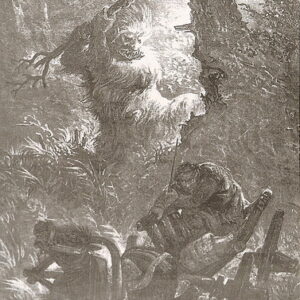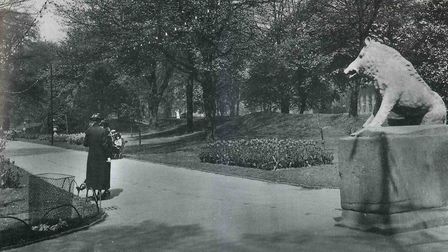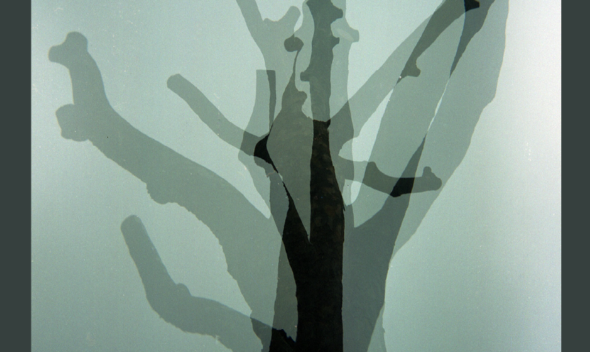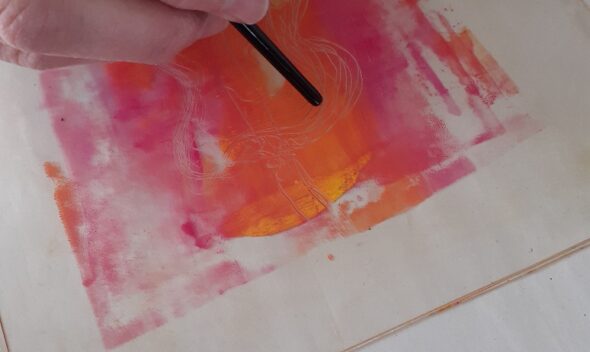Carrying on from my last post – I started looking at collaborative ways of making artworks that relate to Derby’s public spaces. After scouring the web for inspo and coming up with nothing, I remembered a childhood game called Consequences. You might’ve played it with your nan.
The aim of this game is to assemble a sentence together. It’s usually done on paper, with each player completing and then folding over their section to hide it from the next. This means you’re only allowed to see the last word written down. It’s a kind of older, more PG version of Cards Against Humanity. There’s also a set of rules to stop it from being completely wild. For example, one set of rules could be:
The-adjective-noun-adverb-verb-the-adjective-noun.
AKA
The-anxious-artist-swiftly-scribbled-the-dreadful-doodle.
Although created way back when, as a parlor game for posh Europeans – it also just happens that this game is closely tied to The Surrealists™. An artistic movement I referenced last week, which gives me at least ten art points. Their method wasn’t called Consequences, it held a more morbid name – The Exquisite Corpse. This edgier version doesn’t focus solely on words like Consequences does – but images too.
Following a similar set of rules, players would draw a different section of the image. Often times this assemblage ends up being some kind of figurative work, with somebody responsible for the limbs, head, torso etc. A kind of Frankenstein’s monster.
This led me to think about monsters and hybrids – particularly their relation to public space. Turns out they often appear in folklore, mythology and the fantasy genre. Think tree ents, fauns and familiars. These otherworldly creations are often spotted acting as guardians. They may be guarding some kind of treasure, or watching over a particular area. One of the most common areas you’ll find a guardian is the forest. Our cultures have filled these vast and mysterious spaces with equally vast and mysterious creatures. Tamed and owned by nobody, these lands are free to traverse…. but you may just encounter one of these custodians.
Okay, admittedly I found myself going off into some kind of fantasy daydream there. How does this relate to the here and now? Although many of our wild, natural spaces and their respective folklore have been wilted down over time, we still share green – albeit more pruned – spaces today. Our public parks and squares. It just so happens that Derby Arboretum was the first publicly owned, landscaped, urban, recreational park in England. At 180 years old, this space could also be said to have a guardian of its own. The Florentine Boar, a replica of the famous Italian statue. This sculpture was erected at the time of its opening and sits in the centre watching over all.
The arb isn’t the only public space in Derby that’s watched over by beastly eyes. Locals will recognise the Derby Ram. This horned motif is often used to represent the area, it’s folkloric origins are rooted in the regional custom of Old Tup. Locals would dress up as a Ram (amongst other things) and collect cash from unsuspecting peasants at Christmas time. Charming. There’s also the energetic sculpture of a young boy engaged with a grumpy bird in ‘Boy and Goose’- a playful nod to the symbiosis of beast and human.
In my mind, these zoological statues are a symbol for some of the themes of my residency. Guardianship, ownership, psycho-geography, public space and public art. So, I’ll be leading a series of Exquisite Corpse workshops, using Derby’s public statues/monuments/sculptures to create a new kind of guardian.

Exquisite Corpse, 2000, Jake Chapman and Dinos Chapman.

Leshy by Ivan Yizhakevych, Niva magazine, 1904.

The original Arboretum Boar in 1935 nicely refurbished. Credit: Archant

An individual dressed up as Old Tup, 1908.






Leave a comment